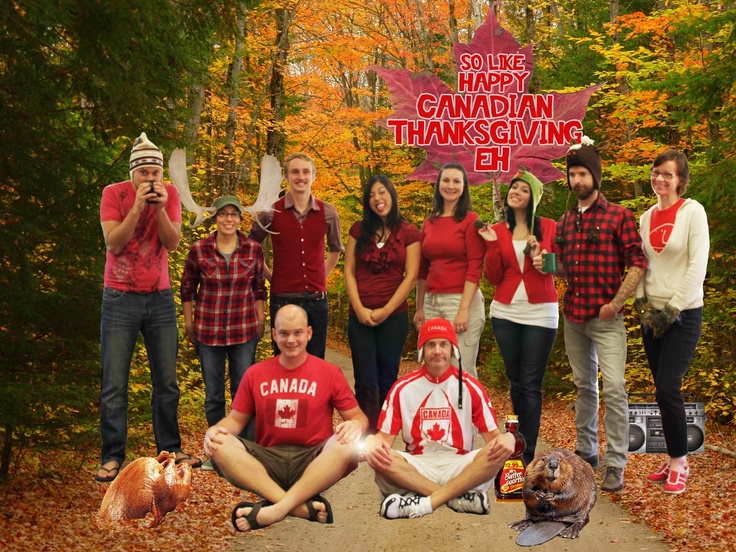It’s Thanksgiving, so get your turkey baster and gobble, gobble. That is Thanksgiving in Canada.
What is Thanksgiving and when is it celebrated in Canada?
Canada celebrates on the second Monday of October, October 14 this year, even though the US version occurs on the fourth Thursday of November. A senior subject editor for the Canadian Encyclopaedia, Andrew McIntosh, spoke to journalists about this yearly feast and answered a common American query: why does Canada celebrate Thanksgiving in October rather than November?
According to him, Thanksgiving in Canada has traditionally been a time to appreciate the fall crop and express gratitude for the food it offers before the arrival of the cold season.
Our autumn harvest occurs early because winter arrives in Canada much earlier, he explained.
“In 1957, the second Monday in October, when the weather is still suitable for outdoor activities, was designated as Canadian Thanksgiving.” Long before that, however, the nation was celebrating. Thanksgiving was originally observed as a holiday in 1879, but it wasn’t consistently observed in October in subsequent years.
McIntosh said, “Parliament set the precise date each year and assigned a unifying theme each year, which was usually celebrating the monarchy.”
Interestingly, he points out that the event was observed as late in the year as December 6 and that it occasionally even fell on the same day as American Thanksgiving. To avoid taking an additional day off work, some Canadians, including the writer’s extended family, prepare their Thanksgiving feast the day before the official Monday holiday. This allows those who travelled by car or plane for the extended weekend to return home.
What is the customary Thanksgiving meal for Canadians?
At first glance, foods that will be served on American tables on November 28 may not seem all that unusual. According to McIntosh, this is because the US significantly impacted Canadians’ diets.
“Canadians very much appropriated the traditional Thanksgiving dinner from America. Across Canada, the traditional spread of turkey, gravy, potatoes, squash and rolls is very common. Cranberry sauce is served on the side and pumpkin pie is served for dessert.”
The senior editor pointed out v frequently preferred over turkey.”
On the other hand, he notes that other people in Western Canada like to have gammon with Brussels sprouts on the side, while “many ethnic groups will frequently include some of their traditional dishes.” “For instance, perogies and cabbage rolls are Thanksgiving staples for many Ukrainian Canadians, while Indigenous people usually serve a side of bannock, a type of fry bread.”
In Canada, the true regional variations around Thanksgiving mainly relate to the desserts that are offered after the meal. “The preferred pie is frequently served with various desserts in different parts of the world—after all, what is Thanksgiving if not an excuse to overindulge?” McIntosh asks.
Similar to the US, most of the country still relies heavily on pumpkin pie. However, he points out that people in Quebec and Atlantic Canada who celebrate Thanksgiving typically like apple pie or apple crisp.
While folks in the west like Nanaimo bars, sometimes known as smog bars or prayer bars in the US, Ontario residents adore their butter tarts, which are like miniature pecan pies. Regarding the French-speaking province of Quebec, McIntosh shares a fascinating truth.
He says the majority of Quebeckers don’t even observe Thanksgiving. He claims that Thanksgiving in Canada was primarily a Protestant celebration in the late 19th and early 20th centuries and was frequently used as a pretext to express gratitude for the British monarchy, which irritated Catholic French Canadians.
While immigrant populations in Quebec tend to follow the French-Canadian standard, Anglo Quebeckers, a minority in the province, do observe Thanksgiving. “We had Thanksgiving as a day off from school and never really understood why,” a Chinese Canadian coworker from Montreal said.
McIntosh further states that Indigenous peoples in Canada “generally tend to experience Thanksgiving more along the same lines as English Canadians as an opportunity to enjoy good food and leisure time with family,” although certain Indigenous tribes in the US observe Thanksgiving as a National Day of Mourning.
“As with anything that is somehow connected to the violent displacement and disenfranchisement of Indigenous peoples, there are still some tensions around Thanksgiving in Canada.” However, he adds that Indigenous people in Canada also saw Thanksgiving as a Celebration of Indigenous foods, such as “turkey, squash, corn, and cranberries,” that date back before colonial arrival.
The Macy’s Thanksgiving Day Parade in New York City is undoubtedly one of the holiday’s main highlights in the United States. Although Canada doesn’t celebrate on this magnitude, it does honour the season—when the leaves are turning and the temperature has dropped—with harvest festivals and activities that fall around Thanksgiving.
For instance, Prince Edward Island, the smallest province in Canada, has the annual Autumn Flavours festival in late September or early October, which celebrates the best local cuisine and beverages for three weeks. The Great White North Pumpkin Fair is held at Smoky Lake, Alberta’s “Pumpkin Capital,” a town further to the west. It is well-known for its numerous culinary and social festivities, which include a dramatic the pumpkin weighs off.
According to reports, the winner this year weighed 2,137 pounds. There’s no telling how many pies the beast could produce. How about going shopping? Are there any good offers to be had? “Canada doesn’t have a big retail connection to the day like in the US, where Black Friday is the biggest shopping day of the year,” observes McIntosh, editor of the Canadian Encyclopaedia.
Actually, on Thanksgiving Day, stores in Canada are usually closed. “In Canada, we save that for Christmas, so it’s not the busiest travel season.” However, we usually use the holiday to watch sports, primarily NHL and CFL games, and use the time off to clean the house or the cottage. After all, it’s winter, Mcintosh stated.




